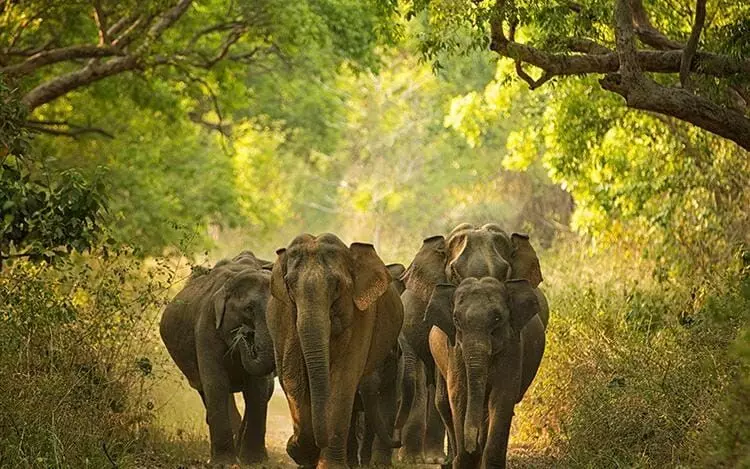Genetic study tracks migration history of elephants in India, finds 'dilution of diversity'
Genetic diversity is important for a resilience to disease and long-term survival, including an ability to adapt to environmental changes
By Newsmeter Network
New Delhi: A genetic study has charted the migration history of elephants in India from north to south, revealing multiple bottlenecks encountered along the way that threatened their existence and likely caused a "dilution of genetic diversity".
Genetic diversity is important for a resilience to disease and long-term survival, including an ability to adapt to environmental changes.
The findings can help shape the future of elephant species in India by informing conservation strategies, researchers from the National Centre for Biological Sciences and the Indian Institute of Science in Bengaluru, said.
The Asian elephant has been listed as 'Endangered' species on the IUCN Red List since 1986. The list was established by the International Union for Conservation of Nature in 1964.
Elephants in India -- known to make up 60 per cent of the global Asian elephant population -- started migrating about 1,00,000 years ago, eventually settling in different parts of the country.
The researchers analysed 34 whole genome sequences, obtained from blood samples taken from wild elephants across the country's landscapes.
The analysis, published in the journal Current Biology, identified five genetically distinct populations, as opposed to previously reported three or four, "emphasising their antiquity and unique evolutionary histories", according to the authors.
Of the five distinct breeds, two are located in north and central India, and three in the south, separated by the Palghat and Shencottah Gaps or 'breaks' in the Western Ghats, they said.
The Palghat Gap lies between Coimbatore in Tamil Nadu and Palakkad in Kerala, while the Shencottah Gap connects Tamil Nadu's Madurai with the district Kottayam, Kerala.
Further, the northern breeds were found to be more genetically diverse and have low inbreeding -- where creatures having very similar genetic material breed -- compared to the southern ones, two of which had low diversity and were inbred, they said.
Co-lead author Uma Ramakrishnan, a molecular ecologist and a professor at the National Centre for Biological Sciences, Bengaluru, told PTI that the team observed a "dilution of diversity".
"Imagine an ink blot on a filter paper, dropped at the top right corner. The further we go from this, towards the bottom left, the less dark the ink is. Similarly, the diversity in southern western ghats is less than that in the northeast and north populations," she said.
Ramakrishnan added that the inbreeding in the southern populations suggested that "there has been either a bottleneck, or mating between relatives recently".
The researchers also found evidence of historical exploitation endured by the land mammals in the form of "bottlenecks". Wild elephants in India are known to be regularly exploited for military and domestic use, since they began to be tamed during Harappan times.
In this study, the samples from the populations in north India and those in the north of the Palghat Gap showed that both underwent a recent bottleneck around 1,500-1,000 years ago, followed by a recovery that started around 300-500 years ago.
Ramakrishnan said, "Many endangered species have been through bottlenecks in the recent past. The nature of this bottleneck affects the distribution of genetic variation and the ratio of good versus bad mutations."
Knowledge of such genetic nature can help inform biodiversity conservation efforts, she added.
"Such understanding can help predict population trends in the future for these populations. Further, understanding the distribution of variation across populations will help plan strategies for future gene flow, should it be necessary," Ramakrishnan said.
The researchers said the presence of five genetically distinct elephant breeds suggested that natural barriers may have kept them apart, allowing them to evolve separately.
Alternatively, it could also indicate an ancient distribution of the population, as elephants these days arguably roam more extensively, largely in search of habitats increasingly fragmented because of human interventions, they said.